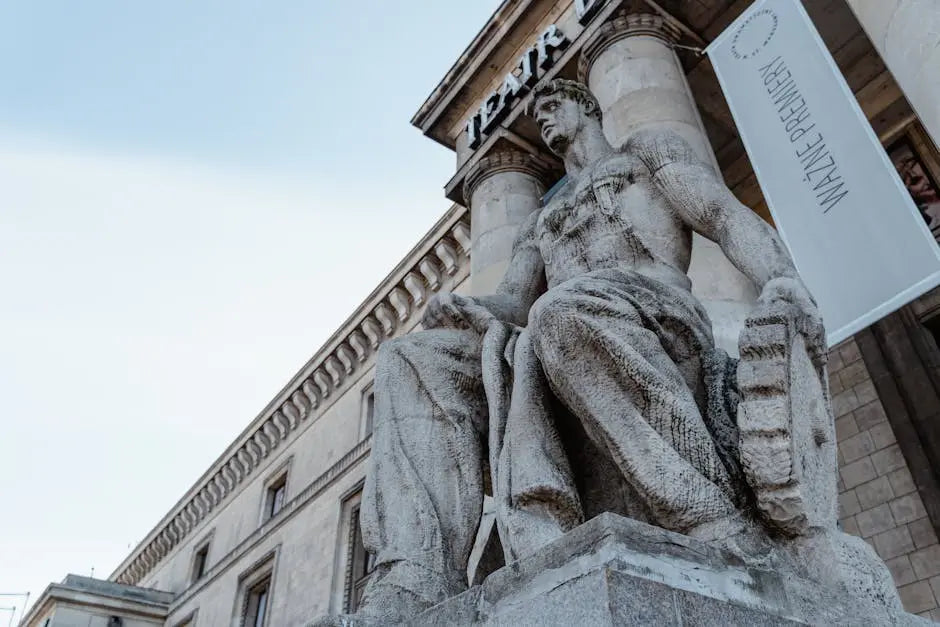My Cart
Your Cart is Currently Empty
FREE SHIPPING ON ALL ORDERS ABOVE $500


Stone sculptures have been a part of human history for thousands of years, immortalizing cultural moments and preserving the essence of civilizations for the future. In this blog, we’ll explore how stone sculpture serves as a remarkable medium to capture and celebrate cultural moments across the globe.
Stone sculptures often commemorate significant historical events, turning them into everlasting tributes etched in time. These sculptures provide future generations with tangible insights into the past, ensuring that pivotal moments are never forgotten. Whether it’s a monument commemorating a battle or statues that stand as reminders of social movements, stone art makes history accessible in a palpable way.
In places like Washington D.C., the use of stone for memorials is widespread, offering a lasting visual history lesson. The Lincoln Memorial, made from marble, is more than just an imposing statue; it is a symbol of unity and freedom. Stone sculptures, through their permanence, serve as constant reminders of pivotal events and the ideals that shaped our world.
Through intricate carvings and grand stone structures, mythology and folklore are brought to life. Artists depict legendary tales, passing on cultural narratives and beliefs through the enduring medium of stone. Sculptures of gods and heroes from ancient Greece, depicted in marble, are perfect examples of how stone art can preserve myths and tales that might otherwise be lost to the sands of time.
Consider the majestic sculptures of dragons and mythical creatures in East Asian cultures, which are not only artistic marvels but custodians of local legends and cultural beliefs. These stone artworks serve not only as visual representations of stories but also as anchors that keep cultural tales firmly seated in the consciousness of future generations.
Many cultures have used stone sculptures to express devotion and spirituality. Monumental religious statues and intricate reliefs are crafted to embody deities and sacred symbols, echoing faith across generations. Iconic examples include the Great Buddha of Kamakura and Michelangelo’s Pieta, masterfully carved to inspire reverence and awe.
In Hinduism and Buddhism, stone is a preferred medium for temple carvings, where each depiction is laden with symbolism and spiritual meaning. Stone sculptures, in this regard, serve as a visual scripture for religious education, communicating complex doctrines and spiritual truths to devotees in a manner that transcends language barriers.
Sculptures immortalize leaders, thinkers, and icons, providing a place of reverence and remembrance. These stone figures stand as a testament to their contributions and influence, capturing the enduring impact of their legacies. Think of the Mount Rushmore National Memorial, where the faces of iconic U.S. presidents are carved in granite, serving as powerful symbols of leadership and democracy.
Stone sculptures are often erected to commemorate cultural achievements or milestones. These markers celebrate human progress and collective accomplishments, providing a physical symbol of communal pride. In various cities, you can find statues of sports icons, musicians, or cultural activists that reflect societal advancements and acknowledge the individuals who inspired them.
From Renaissance to Modernism, stone sculptures reflect the evolving nature of artistic expression. Each piece becomes a visual narrative of artistic styles, techniques, and philosophies prevalent at the time of its creation. The sculptures by Rodin, for example, embody the dynamism and emotional depth of the Impressionist movement.
In cities across the world, stone sculptures are used to enhance urban environments, transforming public spaces into open-air galleries. These art pieces provide cultural texture and serve as a reminder of tradition within contemporary settings. For instance, the unique public art installations in Chicago demonstrate how stone sculptures can transform ordinary urban areas into vibrant cultural landscapes.
Stone sculptures celebrate the diversity and richness of world cultures, representing a variety of customs, traditions, and stories. They serve as a bridge, fostering understanding and appreciation among different cultural backgrounds. The totemic carvings by Indigenous peoples in North America are magnificent examples of stone sculptures that embody the diversity and depth of cultural histories.
Sculptors use symbolic language to convey complex cultural narratives, embedding stories in every carve and contour. These symbols transform stone into an eloquent storyteller of human experience and tradition. Whether through the allegorical figures of the Baroque era or the abstract forms of modern art, each sculpture carries a narrative that invites the viewer to explore deeper meanings.
Contemporary stone sculpture combines traditional techniques with modern innovation, reflecting how cultures evolve while staying connected to their roots. This fusion creates new cultural dialogues, emphasizing continuity and change. Artists today are experimenting with new technologies and methods, incorporating 3D printing and laser cutting, making stone sculpture an exciting frontier for artistic exploration.